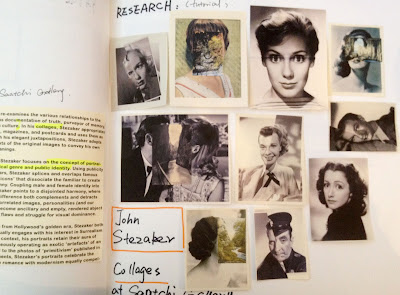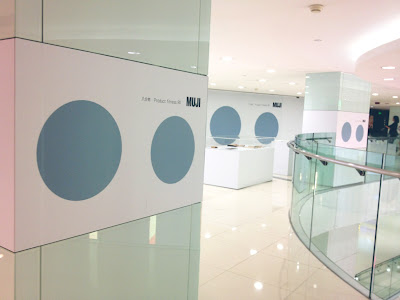When we had the tutorial or workshop in class, tutors often mentioned the artist John Stezaker. This time we have chance to see his amazing collage works at the Saatchi Gallery. It is really different to see the real one bot only google the images in the internet. I was surprised with the exact connection of different images and the illusion of the collages.
The exhibition introducted that Stezaker focuses on the concept of portraiture, both as art historical genre and public identity. Using publicity shots of classic film stars, Stezaker splices and overlaps famous faces, creating hybrid ‘icons’ that dissociate the familiar to create sensations of the uncanny. Coupling male and female identity into unified characters, Stezaker points to a disjointed harmony, where the irreconciliation of difference both complements and detracts from the whole. In his correlated images, personalities (and our idealisations of them) become ancillary and empty, rendered abject through their magnified flaws and struggle for visual dominance.
When I did my former project "Lost in life", tutor suggested me to see John Stezaker's work. At that time, I researched a lot of his collages, expecially the portrait works. When he changed a part of a portrait, used another person's head or building and landscape to replace, it looks like missing emotion of a person and someone lost something in life. That is related to my theme and it is useful to do more research.
The exhibition introducted that Stezaker focuses on the concept of portraiture, both as art historical genre and public identity. Using publicity shots of classic film stars, Stezaker splices and overlaps famous faces, creating hybrid ‘icons’ that dissociate the familiar to create sensations of the uncanny. Coupling male and female identity into unified characters, Stezaker points to a disjointed harmony, where the irreconciliation of difference both complements and detracts from the whole. In his correlated images, personalities (and our idealisations of them) become ancillary and empty, rendered abject through their magnified flaws and struggle for visual dominance.
When I did my former project "Lost in life", tutor suggested me to see John Stezaker's work. At that time, I researched a lot of his collages, expecially the portrait works. When he changed a part of a portrait, used another person's head or building and landscape to replace, it looks like missing emotion of a person and someone lost something in life. That is related to my theme and it is useful to do more research.


































